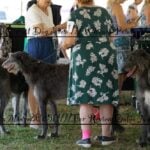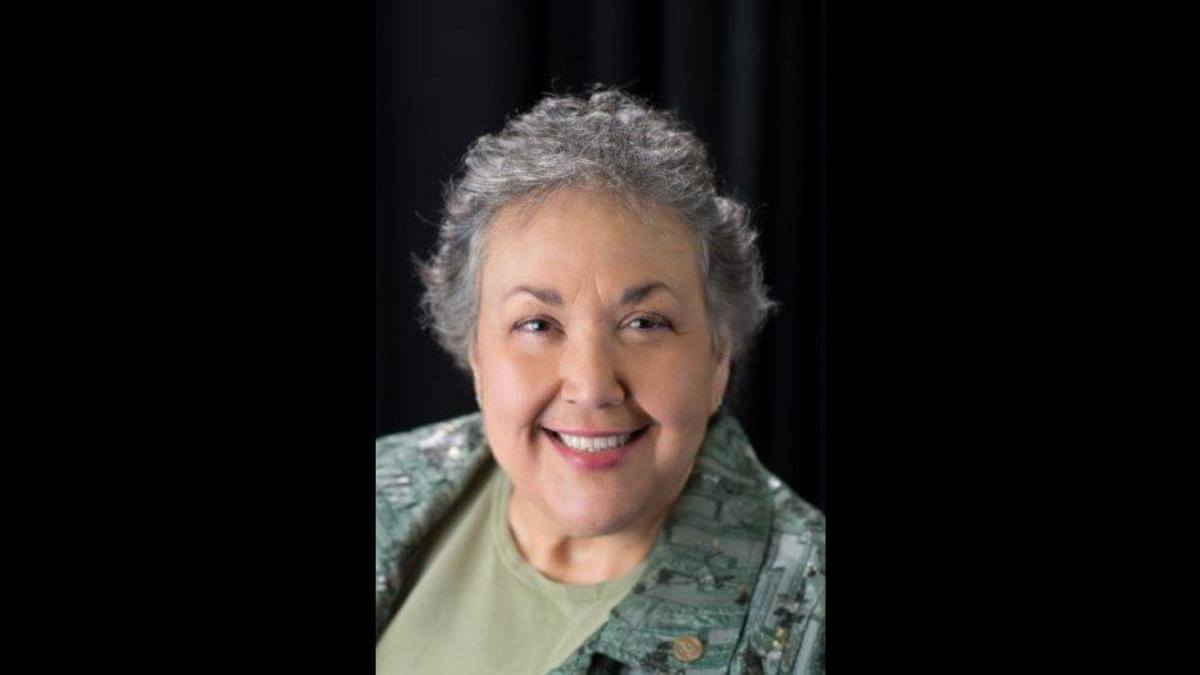
Home » Celeste M. Gonzalez | Jolly Time Hounds

Celeste M. Gonzalez
1. I live in Thomasville, North Carolina. I started showing Basset Hounds in 1975, so this is my 50th year. I started breeding in 1980, so that’s 45 years. Jolly Time Hounds is my kennel name.
2. Basset Hounds should be long and low, not excessive in any way, in order to maintain a functional hound that can hunt several times a week for hours at a time, and have the characteristic doleful expression as well as a true wrap-around front; that is, that the ulna and radius (forearm) should cup the chest as if sitting in an egg cup.
3. There are plenty of puppy homes waiting for their Basset companion. As ethical breeders, we need to be sure to conduct all genetic health testing recommended by the parent club. A recent analysis of 2023 American Kennel Club (AKC) data regarding Basset Hounds bred and producing indicate that only three percent of parent club members produce registered Basset Hound litters. There were 1,642 total litters produced by parent club member breeders and non-member breeders. That indicates that there is an unmet demand for Basset Hounds that non-parent club breeders step in and fill.
4. Science, especially genetic testing, has come a very long way since I started. We used to send blood to a New York laboratory for functional blood testing for thrombopathia. Years later, and through concerted effort of several breeders and Dr. Mary Boudreaux of the Hematology Lab at Auburn University, the simple recessive genetic mutation for Basset Hound Thrombopathia was discovered.
Ethical breeders began testing and arranging matings more selectively, resulting in a significant decrease in the clinical disease, as well as a reduction to approximately three percent of genetic carrier (heterozygous) status. From there, breeders understood that to breed healthy Bassets we needed to genetically test for those diseases that had a genetic basis, and/or to be part of the pool of genetic samples that contribute to the discovery of genetic mutations that manifest as clinical disease.
With the advent of social media and instant communication, breeders, with the assistance of the Basset Hound Club of America (BHCA), and researchers have uncovered and are genetically addressing Primary Open Angle Glaucoma (POAG), Mucopolysaccharidosis Type I (MPS 1), and Lafora disease in Basset Hounds. Primary Closed Angle Glaucoma (PCAG) remains the next target. Through the combined efforts of the AKC Canine Health Foundation, The BHCA Foundation, and Cambridge University (UK), progress is being made in identification of genetic cause(s).
5. There is a widespread perception in the general public that rescuing, most often mongrels, is better than buying a purebred dog. As ethical breeders we need to kindly answer the public’s questions and be prepared to go above and beyond in describing care and health of the breed, whether they end up buying from an ethical breeder or not.
6. In addition to the greatly reduced numbers it takes to win a major in so very many breeds, I am witnessing the inclusion of many exhibits from a litter to make majors at some shows. Many times, those littermates are what we used to call “point fodder.” The overall dog quality to make up a champion has been greatly reduced, both to my eye as a breeder and as a judge. This only hurts the breed. Many in my breed would have been placed in pet homes 30 years ago. I am sorry to see this decline in quality. At our largest show, the National Specialty, breeders make it a point to bring their best. It is there that we get to see what the breed was and is in terms of quality.
7. Online entries with most of the superintendents and show secretaries is a positive change.